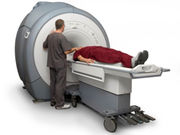Fatty acid fractions may be linked to invasive ductal carcinoma in postmenopausal women
WEDNESDAY, June 8, 2016 (HealthDay News) — For postmenopausal women, fatty acid fractions in breast adipose tissue may be associated with invasive ductal carcinoma, according to a study published online June 7 in Radiology.
Melanie Freed, Ph.D., from the New York University School of Medicine in New York City, and colleagues used a rapid, noninvasive, in vivo imaging method to measure fatty acid fractions of breast adipose tissue during diagnostic breast magnetic resonance examinations. Multiple-echo, three-dimensional gradient-echo data were obtained for 89 women. Spectra were generated and used to estimate the fractions of fatty acids.
The researchers found that among postmenopausal women, those with invasive ductal carcinomas had lower monounsaturated fatty acid and higher saturated fatty acid (SFA) than those with benign tissue (both P < 0.05). In breast adipose tissue there was no correlation between body mass index (BMI) and fatty acid fractions. Among women with benign tissue, polyunsaturated fatty acid was higher (P < 0.01) and SFA was lower (P < 0.05) for postmenopausal versus premenopausal women.
“There is a possible link between the presence of invasive ductal carcinoma and fatty acid fractions in breast adipose tissue for postmenopausal women in whom BMI values are not correlated with the fatty acid fractions,” the authors write.
Full Text (subscription or payment may be required)
Copyright © 2016 HealthDay. All rights reserved.








